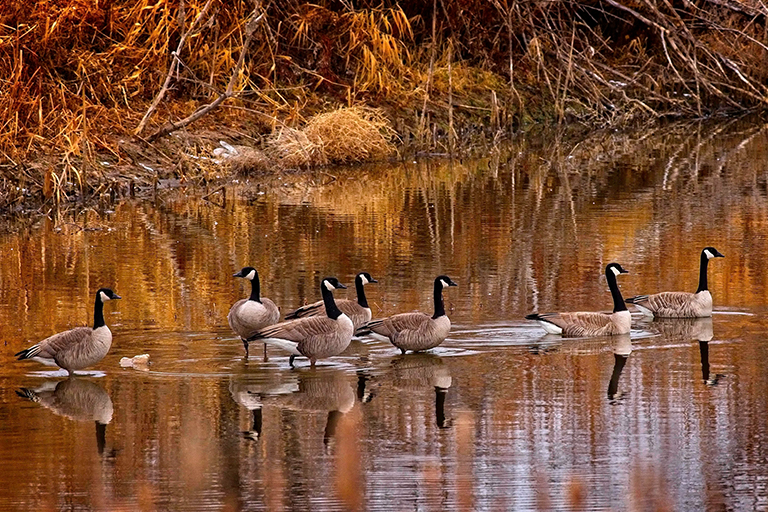By Dennis Smith
The time has long passed since the kids and I could drive 15 minutes from our old house in southwestern Loveland to the neighbor’s farm pond, throw out a few decoys and shoot a couple of ducks or maybe even a fat goose. We’d make sure to get there way ahead of sunup so we’d have time to rustle up a skillet full of sausage and eggs, set a pot of coffee to boil on the camp stove and let our Lab, Moses, run off some of his pent-up energy before legal shooting light.
Green-winged teal were often the first ducks to show up, arriving before dawn on a rush of wings that sounded for all the world like a squadron of miniature fighter jets zooming overhead. They’d circle the decoys once and splash down in the pond like they owned the place. More likely than not, it would still be too dark to shoot, which would pitch Moses into fits of excitement — whining and trembling from head to tail.
Early in the season there’d be spoon-billed ducks or shovelers, as they are sometimes called, green- and blue-winged teal, widgeon, gadwalls and an occasional, elegant pintail in the mix.
But what we really looked forward to was the flights of mallards that came whistling down out of Canada ahead of the big winter storm fronts late in the year. These were plump, gloriously-colored birds fattened on the vast grain fields of Saskatchewan or Manitoba and among the best tasting of all waterfowl. We’d marinate their breast meat in whiskey, hot pepper flakes and apricot preserves; skewer them with slices of Portobello mushroom, leeks and sweet bell peppers; then grill the whole shebang quickly over hot coals. Served rare on platters of jasmine rice, they’re an epicurean delight.
We seldom shot a full three-man limit, but that was never our intent anyway. Wild duck is a dish best served fresh, so we never shot more than our family could eat at one sitting. When we collected enough for dinner, we’d kick back in the blind and continue to scan the sky for waterfowl. If you’ve never seen a flight of ducks drop from on high, slip their wings and flutter like maple leaves falling to earth, you’ve missed one of the most enchanting demonstrations of aerial grace in the wild.
And it’s not only ducks. I recall one November afternoon when the sun drooped soft and gold in the late day sky, painting the pond with the colors of autumn. A family of Canada geese circled our spread, cupped their wings, side-slipped into the water right beside our blind and made themselves at home. I fully expected Moses to freak out and lunge from the blind, but he didn’t. He just sat there looking from the geese to us and back again as if he were dumbstruck. Which, now that I think about it, I suppose he was.
Dennis Smith is a freelance outdoors writer and photographer whose work appears nationally. He lives in Loveland.

